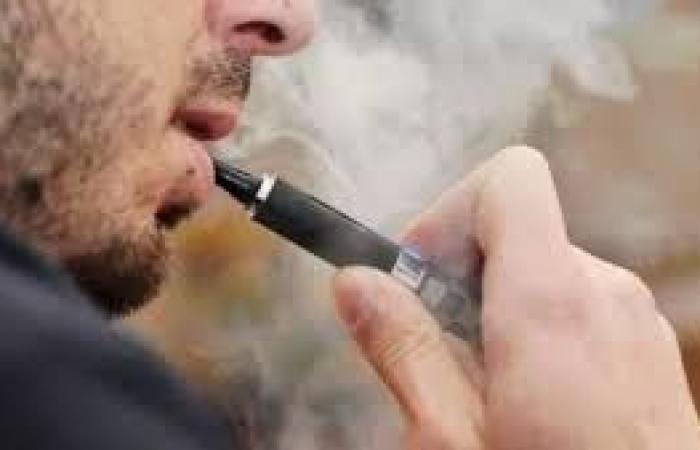E-cigarettes and heated tobacco products are increasingly popular. Especially in the hands of the very young. Introduced on the market with the hope that they would replace cigarette smoking on the road to quitting the habit, too often they are instead a rite of initiation for young people into smoking (even traditional cigarettes). It is too early to make a definitive statement on their safety for health (they have been on the market for about ten years, but oncological, respiratory and cardiological diseases related to smoking develop over a period of 20-30 years), but they are starting to appear many studies ‘against’.
And a group of experts from the Italian Society of Internal Medicine (SIMI) (Paola Andreozzi, Gualberto Gussoni, Giorgio Sesti, Nicola Montano, Antonello Pietrangelo), made a review of all the scientific literature, published in ‘Internal and Emergency Medicine’, on the impact of e-cigs and heated tobacco products on respiratory diseases (asthma and chronic obstructive bronchitis or COPD), the first pathologies that emerge with the use of e-cigs and heated tobacco products.
“As internists – says the first author of the review, Dr. Paola Andreozzi, member of the SIMI Board of Directors – we very frequently find ourselves assisting patients with smoking-related diseases. For this reason, it is necessary to clarify among doctors and the public what we should expect, in terms of health risks, from third-millennium smoking, which often, among other things, continues to be associated with traditional cigarettes, in a very dangerous tandem”.
“Internists – says Professor Nicola Montano, president-elect of SIMI – must be well informed of the emerging trends with respect to pathologies, in particular respiratory ones (asthma and COPD), induced by these alternatives to cigarette smoking. And a fundamental imperative is to prevent people from taking up smoking in any form.” “Unfortunately – underlines Professor Antonello Pietrangelo, past-president of SIMI – the use of e-cigs and heated tobacco products is increasing at a worrying rate among young people and adolescents, who risk developing an addiction to nicotine and approaching following traditional smoking. In short, their use in very young people must be restricted by all means.” “Quitting smoking is not an easy task – admits Professor Giorgio Sesti, president of SIMI – but an examination of all the available scientific literature demonstrates that e-cigs and heated tobacco products are alternatives that are anything but risk-free.
Their use involves an increased risk of developing asthma and/or COPD and of damaging lung function, compared to non-smokers. Only in the case of a heavy smoker of traditional cigarettes who simply cannot stop smoking, the use of these alternative products can be justified, in an attempt to mitigate the risk”.
What happens to the lungs
E-cigs and heated tobacco products can inflame the airways and increase susceptibility to viral infections. Furthermore, although in a different way than traditional cigarettes, they contain chemical substances capable of altering DNA and this could favor the appearance of tumors years later. E-cig users have a higher incidence of asthma/COPD and worse symptoms compared to non-smokers; a fact that is alarming especially among younger people. In particular, flavored liquids (those intended for the young and very young market) have the greatest irritating action on the airways. E-cigs and heated tobacco products are therefore not harmless at all, although less dangerous than traditional cigarettes. Furthermore, there is no conclusive evidence in the literature as to whether e-cigs or heated tobacco products are actually effective in allowing (cigarette) smokers to quit smoking.
The feat of quitting smoking
70% of smokers would like to quit, but it’s not easy. On average, it takes 6 attempts before you succeed. Patches or other nicotine replacement therapies and behavioral support help. And if the advent of e-cigs and heated tobacco products had been welcomed as a tool for smoking cessation, now that enthusiasm has cooled and people are starting to worry about the fact that paradoxically these products could actually contribute to increasing the army of smokers. And we also wonder, at what cost? An answer in the meantime comes from the numbers. In Italy, according to Euromonitor International, in 2020 these new products represented 7% of the entire smoking market in our country; at the same time, there has been an increase in the number of e-cig smokers (in 2019 they were 900 thousand). These are not negligible numbers and they are growing. It is therefore good to ask ourselves what all this could mean for our NHS in the coming years.
Asthma and COPD: two sides of the same problem. They are the most common respiratory diseases in the world, a public health challenge and a major cause of morbidity and mortality. According to the BOLD (Burden of Obstructive Lung Diseases) study, the global prevalence of COPD is 10.3%, with an increasing trend. ISTAT attributes a prevalence of 5.6% to Italy (probably underestimated). Also for asthma, the global prevalence stands at 10% among children and adolescents, dropping to 6-7% among adults (in Italy it is 6.1% over 15 years of age, with an increasing trend). In smokers and those who have repented of smoking, these two conditions, asthma and COPD, can coexist, and not by chance. Smoking is an important risk factor for COPD and a trigger for asthma. Unfortunately, one in four Italians still smokes (almost one in three in the 18-34 age group) and the number is struggling to decrease further. 35-45% of COPD patients smoke (only 1 in 5 has never smoked). Half of the people who suffer from asthma are active smokers or have repented of smoking.
What is hidden in a cloud of cigarette smoke
Cigarette smoke is a complex aerosol containing 700 different chemical substances (among the best known, nicotine, carbon monoxide and carbon dioxide, heavy metals such as nickel, cadmium, chromium, arsenic, formaldehyde, acreolein, acetone, polycyclic aromatic hydrocarbons , tar, etc.) many of which have toxic and carcinogenic properties. Smoking is also rich in ROS (oxygen free radicals) which are harmful to all structures of the body, including the airways.
Compared to cigarette smoke, e-cig liquids contain fewer substances: vegetable glycerol, propylene glycol, nicotine and water, to which artificial flavours, natural extracts or a combination of the two are added. E-cigs do not produce smoke, but vapor. Inhaling their heated aerosol can trigger inflammation of the airways (although less violently than cigarette smoke). E-cig vapors are also toxic to cells (especially in highly flavoured liquids), affecting their proliferation and altering their morphology, similarly to nicotine in cigarettes. They can also stimulate the production of ROS, which damage DNA and reduce cell vitality. E-cigs also increase susceptibility to respiratory infections and can exacerbate the symptoms of asthma and COPD.
HnB tobacco products
They contain harmful chemicals such as nicotine, particulate matter, benzene, acrolein and nitrosamines, in quantities lower than those of traditional cigarette smoke, but still dangerous. Their prolonged use is associated with alterations of the endothelium (the inner lining of the vessels), oxidative damage and activation of platelets; they increase inflammation of the airways and the risk of infections at this level. In short, they are anything but harmless.






